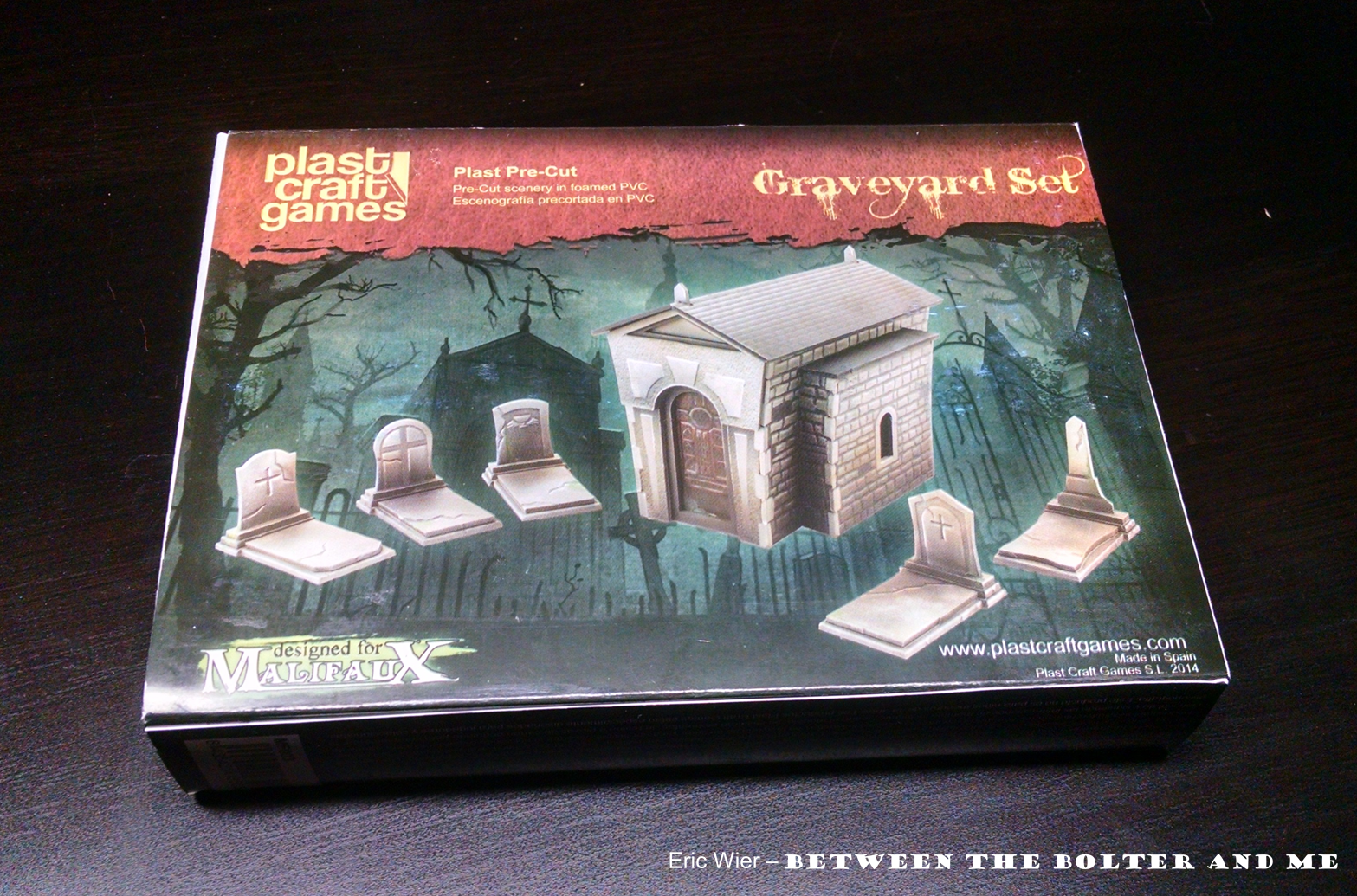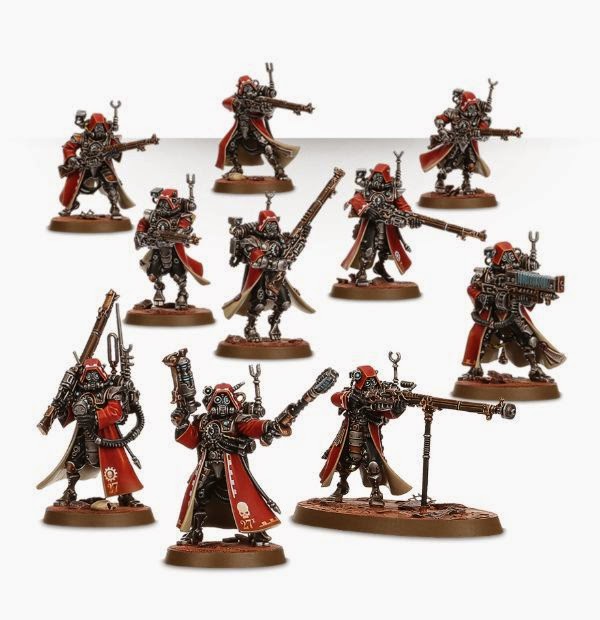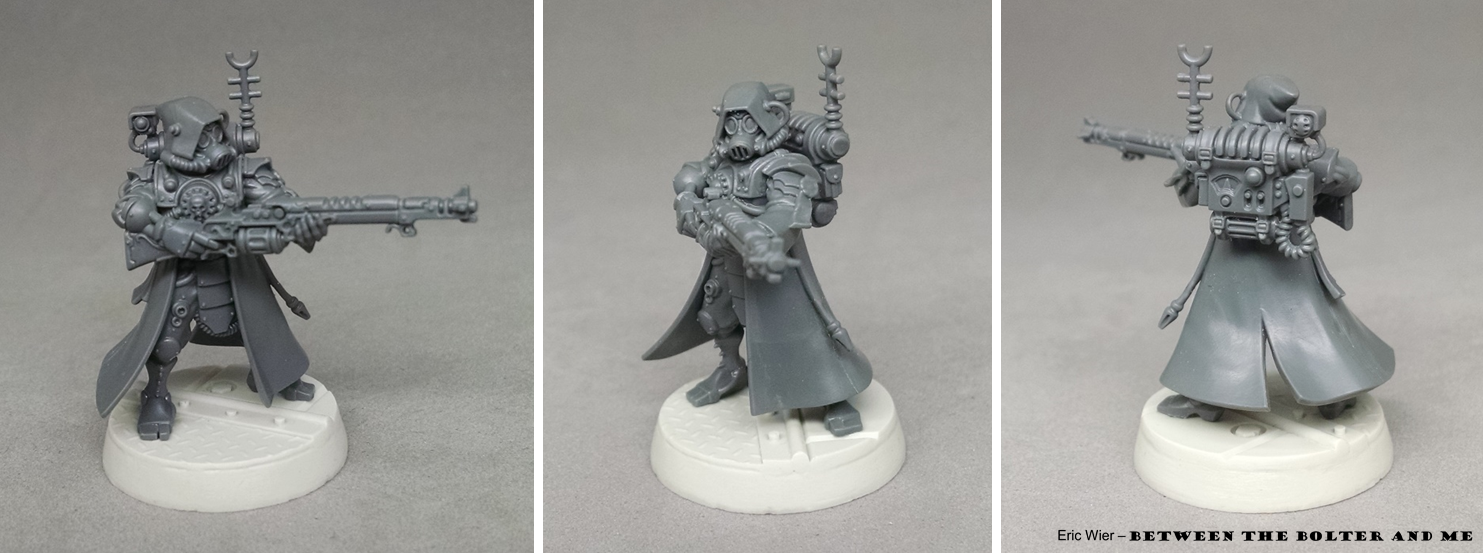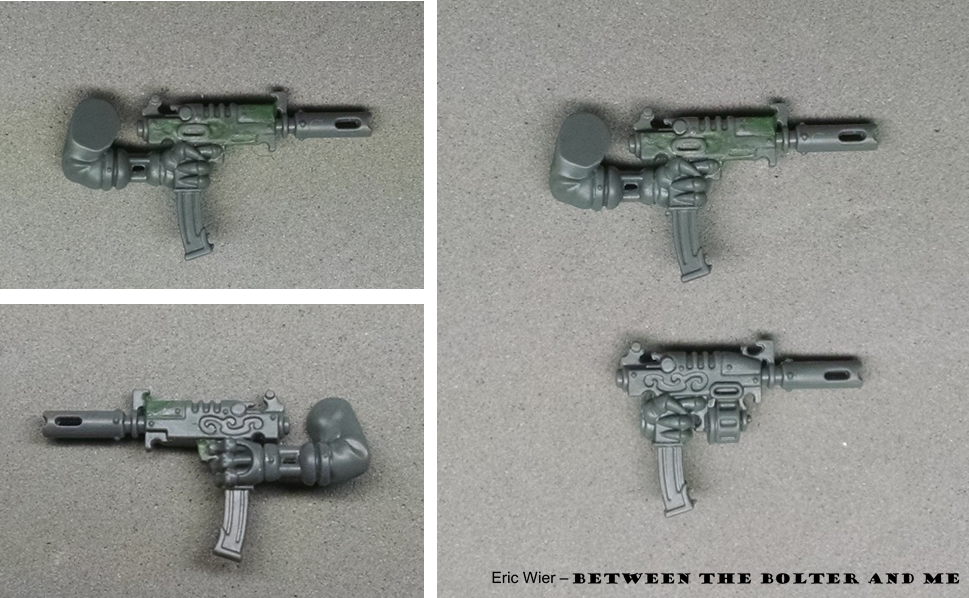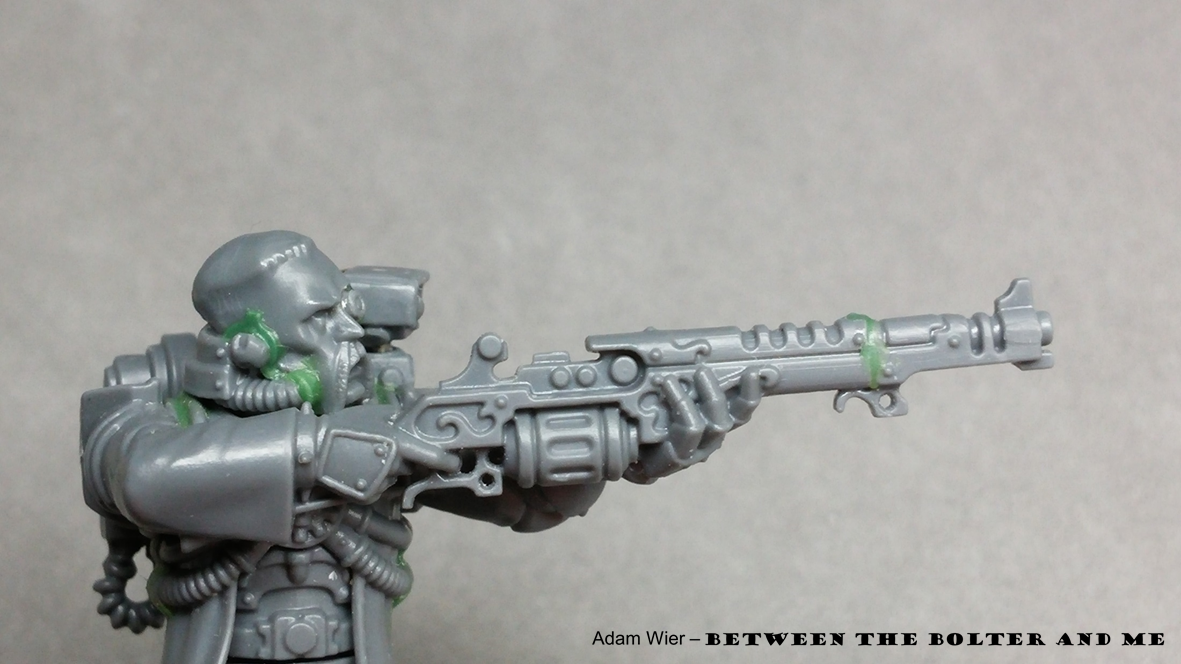Despite being a week or so into 2015, we here at Between the Bolter and Me are still being drawn back to the happenings of 2014. The gaming/hobby community has generated a wealth of breathtaking miniatures which will certainly serve as an inspiration to many of us for future projects. So before getting caught up in 2015 and all of the projects that it promises, we wanted to take the time to highlight some of the miniatures, blogs, and hobbyists that inspired us in 2014. While we can’t hope to cover all of the incredible artists in this post, hopefully, you will find something that you missed, or be reminded of some great models from 2014!Blog de Kouzes![]() |
| Plague Centurion - Morbäck |
Without a doubt, Le blog dé Kouzes is one of the most visually and creatively astounding Warhammer 40,000 blogs on the internet. Its four members all do amazing work, but it is usually Morbäck’s works that leave us stunned. And nothing this year blew us away quite like his
Plague Centurion. Although clearly based on a Lord of Skulls, virtually every aspect of the model was modified, from removing any trace of Khorne, to completely resculpting the head (complete with an ominous single eye and a domed helmet veiling a blubberous, toothy maw). The vats behind its torso were ingeniously made into pits of vile liquid swiming with tormented corpses. Perhaps what I like most about the model, however, is its fantastic axe. Held in an impressive two-handed grip, it has a broad, vicious blade, corroded and pitted, which horrifyingly has three buzzsaws built into it. If that was not enough, the head of the axe also has a mammoth flamethrower build within. And because the devil is in the details, he even included a pilot light! Every facet of this engine of pestilence is further reinforced and strengthened by its paint job, primarily a weathered, sickly white. What sells the horror in the piece, however, is the filthy rust-covered axe it carries; death clearly does not just come from the lacerations it inflicts.
Picta Mortis![]() |
| Dark Eldar Space Pirate - Picta Mortis |
Easily one of my favorite models of the year is Picta Mortis’s
Space Pirate. This Dark Eldar archon embodies all of the sinister and alien traits that one could hope to find in a Dark Eldar model. The model is a masterful combination of several plastic kits including those of the Dark Elves, the Slaanesh daemonettes, and Dark Eldar. The choice to convert the model’s face from that of a daemonette was pure genius, giving the model a unsettling and uniquely alien vibe, perfect for the Dark Eldar. In addition to the fantastic conversion work, the paint job is equally impressive, managing to build on the chillingly evil characteristics seen in the model’s construction.
What is not to love about the limited color palette of blacks, whites, and reds?
Despite the blog only being in existence for a short while, Picta Mortis has already begun creating an entire army of similarly moody and atmospheric Dark Eldar raiders. We here at Between the Bolter and Me can not wait to see more!
Spiky Rat Pack![]() |
| Inquisitor Isaac Valon - Kari Hernesniemi |
When talking about the best models of the year, I would feel remiss if I did not mention Kari from
Iron Sleet (formerly Spiky Rat Pack). From the onset, Kari has always been at the forefront of the Inq28 movement. He has a very unique style that builds off of elements favorited by John Blanche, emphasizing weird anachronistic characters which are accented with a limited color palette. But Kari takes these elements in a slightly different direction, favoring careful Kopinskian detail and realism, rather than the broad strokes favored by the father of grim and dark. Two models that he created this year really convey his unique vision of 40k, and were some of our favorite models we have seen all year. The first is
Inquisitor Isaac Valon. Although a relatively simple conversion, Kari shows his mastery of kit-bashing by creating a seamless model that does not look like a conversion at all. This is aided by his careful part selection, taking care to balance scale and proportion with style. The character also maintains his penchant for mixing science fiction with fantasy, with his ruffled sleeves and pin-striped trousers, alongside a steampunk mechanical limb and neural cords streaming from his cranium. This grizzled veteran looks all the more eccentric and driven by the paint scheme. The careful application of red accents to many of the parts makes the model almost look colorful, despite a very limited selection of hues. I particularly like his red striped pants, as they remind me of the early 90’s when Games Workshop was all about red, black, and white, with a proclivity to include checker patterns.
![]() |
| Slaaneshi cultist - Kari Hernesniemi |
The second model, a
Slaaneshi cultist, shows his weird bohemian style, creating a crazed individual that seems to come straight from a macabre carnival of damned souls. His choice of the Dark Eldar legs was excellent, the skin-tight nature of the garment is at odds with the rest of the model, giving him a grotesque, disturbing feel. This feeling is only strengthened by his rasping, gigantic claw of a hand. But the true genius is in his face. The two tufts of ratty orange hair stick up like fiery horns, haloing an addled physiognomy with sunken eyes and a creepy, toothy smirk. Few models this year have conveyed the ancient, unknowable evil inherent in the insidious winds of Chaos like this lowly cultist.
Officio Convertorum
What would our list be without some mention of the converter/painter extraordinaire Jeff Vader over at Officio Convertorum. We still can’t get over the blinding pace at which Jeff can conceive, create, and paint the droves of models that he puts out, each one a unique and memorable conversion. This year, one of his themes was unquestionably focused around Grandfather Nurgle and his noxious allies.
![]() |
| Nurgle follower - Jeff Vader |
While maybe not as flashy as some of his other work this year, one of his conversions that really stood out to us was a
Nurgle follower wielding a mighty assault cannon. The combination of plague zombie and ailing machine-construct comes together perfectly with the model. The small details really sell the model, like the network of cables sprouting from his back and his slightly hunched posture to support the assault cannon. His paint job is really something special too, blending a range of greens and browns with a small amount of teal to tie the entire model together. Also, look at that base born of blood, rust, and dirt!
![]() |
| Plague Marine - Jeff Vader |
The second model that comes to mind is the first of his
Plague Marines converted from the fantastic Putrid Blightkings kit. This Plague marine was one of the first conversions of the like that we saw utilizing the Blightkings and is still one of our favorites. The hulking armored form of the Blightkings works convincingly as a space marine with only a few modifications, including a marine helmet and a converted powerpack. Fitting for a veteran of the Long War, the marine is carrying one of the plastic 2nd edition Boltguns, its boxy furniture and skeletonized stock looking distinctly ancient.
Legion of Plastic![]() |
| Skitarii operatives - Migsula |
Migsula, of Legion of Plastic (or now, rather, Iron Sleet), has also been incredibly prolific, creating some extremely most memorable models. While he has been receiving a lot of attention for his latest project revolving around the fabled warriors of the Space Wolves 13th company, the Vlka Fenryka, we wanted to look at some of his other amazing exploits. Chief of which has been his work with the plastic Militarum Tempestus Scions. He managed to completely transform the warriors in the plastic kit into special operatives from the Adeptus Mechanicus of Mars,
the Skitarii. The most obvious modification was to their rifles, transforming them into some of the coolest looking Boltguns that I have seen in years. It is amazing what replacing the barrels and ammo feeds can do to their weapons. He was even able to fashion one with a ponderous heavy bolter. In addition to their weapons, Migsula also modified the direction of their shoulder-mounted cameras/lights to follow the position of the warriors’ vision; a small detail that immeasurably builds their character and believability (and the inspiration to do something similar with the Scions that we converted).
![]() |
| Warrior Mystic Alpharius - Migsula |
He also found time to continue to work on his venerable Alpha Legion force, namely in the form of a wonderful
Warrior Mystic Alpharius. Like the rest of his Alpha Legion marines, the Mystic is modeled to his true scale, towering above the other non-Astartes members of the Legion. The model shares many strong visual cues with space marine librarians, including a psychic hood and force staff of sorts. Additionally, the model is awash with lots of fantastic little details like scrolls, keys, grenades, and my favorite of all, a mighty tome at his side sealed under lock and key! Additionally, Migsula created a human sage/apprentice to accompany the Mytsic, tasked with bearing witness to the Legion’s secrets and lore over the millennia. The sage does an excellent job of emphasizing the difference in scale between human and Astartes.
The Metatyrant![]() |
| Inquisitor de Lorme - Tomasz |
Based on many of the other inclusions on this list and content of the blog, it is probably pretty clear that we have a particular love of Inq28. It allows for unlimited exploration into the most outlandish and eldritch element of the 40k universe. The internet is filled with many excellent blogs that combine various kits in interesting ways to achieve characters for this setting, but Tomasz, from his blog the Metatyrant, takes things a step further. Rather than trying to repurpose models for his conversions, he has a tendency to simply sculpt the characters he envisions from the ground up!
Inquisitor de Lorme is a superb example of this, and is one of our favorite Inquisitors of the year. The model has an unsettling vibe, as though he is a Victorian aristocrat at a decadent masquerade. He has a fantastic plague doctor beak/mask that covers his face and is framed by an elaborate wig of bleached curls. Adding further mystery to the model is the thorned cane he is carrying (something you don’t see everyday); you can almost hear it asking the question: what can change the nature of a man (Planescape: Torment!)? A servo skull hovers over his shoulder, carrying a small shield displaying the Inquisitor’s heraldry, giving us another window into the model’s character and background. The paintjob compliments the model beautifully, adding emphasis to key visual aspects of the model, like his moody red mask (and red fingernails!). To top everything off, Tomasz does a wonderful job walking through his thought process behind his miniatures, often describing in detail where he took
inspiration from. It is a perfect way to pass on ideas and excitement about a project.
Those whom the gods would destroy…![]() |
| Iron Hands Legionary - MonkeyBallistic |
Another new blog to the scene this year, Those whom the gods would destroy, penned by MonkeyBallistic, is a fantastic look into the Horus Heresy. MonkeyBallistic has embarked on a noble quest to build a small detail of Iron Hands and their retainers on the escort ship Euripides. Learning of the tragic death of their Primarch during the Dropsite Massacre on Istvaan V, these Loyalists are dead set on bringing ruin to the Traitor Legions. Towards the end of 2014, MonkeyBallistic started work on his first
true-scale marine of the crew. Even without the marine being completed, we know he is going to be a masterpiece, containing all of the visual elements essential to an Astartes. Wisely, he significantly bulked up the marine’s breastplate, and extended his legs, rather than relying solely on the pieces he based the model around (primarily Cataphracti terminator armor and Iron armor). Although the model would have looked fine without these adjustments, it was their inclusion that elevates it above most of the true-scale marines that we have seen over the year, and makes us extremely excited to see more!
Death of a Rubricist![]() |
| Roboute Guilliman - Apologist |
Continuing on the theme of fantastic true-scale Space Marines (we question whether anyone can get enough of Space Marines?), we have to mention the work of Apologist over at
Death of a Rubricist. He has been working tirelessly creating an entire army of Pre-Heresy/Heresy era Ultramarines! Crafted from a combination of Forge World resin, Games Workshop plastic, and a healthy amount of modelling putty, his warriors of Ultramar are a sight to behold!
In December, Apologist started work on a second version of the Ultramarine Primarch, Roboute Guilliman (that’s right, a second version!). For his new conversion, he has taken advantage of the Simon Egan’s fantastic sculpts of Vulkan and Ferrus Manus. With a considered hand, he combined various parts from both models to create the foundation of Guilliman. Impressively, he does not look like a cannibalized version of the two models. Instead, he becomes his own character, noble and just, owed in part to the regal looking face. It is amazing how sculpting hair and careful painting was enough to completely transform Vulkan’s face into that of Guilliman. Even when Forge World gets around to sculpting their own version of him, this conversion is sure to still stand strong and proud alongside it.
-Pontifex-![]() |
| Pontifical Guards of Lord Pontifex Canus Er Thrax - Quinn Menton |
Moving away from Warhammer 40k (but not too far), we want to mention the blog
-Pontifex-, which focuses around Necromunda and Mordheim. The two contributors Quinn and William have a knack for being able to create models that blend concepts and themes from both games together, resulting in some very primeval and feudalistic pieces.
Case in point, some of our favorite models showcased on their blog are the two
Pontifical Guards of Lord Pontifex Canus Er Thrax. Due to his consummate skill, Quinn was able to pull off an unlikely, yet incredibly unique, combination of baroque medieval battleplate and modern wargear like lasrifles, and grenades. We love the use of Dark Eldar plastics for the legs of the models. It is rare to see Dark Eldar components on guardsmen, but, in this case, the components could not have worked better! The messy (in the best way possible), brutal-looking paint schemes emplied also help reinforce the grimy, dejected world that the characters inhabit (which they are excitingly building in the form of a tablescape of the underhive of Necromunda).
PDH![]() |
| Inquisitoral storm trooper Rence Thenes - PDH |
We want to showcase the work of another modeler who is active in the Inq28 community, PDH. Although he does not have his own blog, as far as we are aware, he is very active on the
Dakka Dakka forums. Over the years, PDH has created some of the most imaginative Inquisitorial agents we have seen. He particularly excels at building believable operatives, grizzled Imperial Guard veterans, and Adeptus Arbites. He accomplishes this so effectively by focusing on visual elements reminiscent of modern soldiers. His models are equipped for war, carrying sidearms, grenades, ammunition pouches, combat knives, rebreathers, flashlights, and bedding (and always without looking cluttered and overdone).
This year we were particularly impressed with (and it may be our favorite of the year) his model of Inquisitorial storm trooper Rence Thenes, a warden of the Loidis Central Library turned Ordo Malleus agent. Despite being based around a
Chaos Renegade, PDH was able to transform the model into an unquestionably Imperial operative (exactly what comes to our mind when we think of the Imperial Inquisition). Everything about the model is interesting and demands you spend time examining the details, from the cuffs of his jacket to his high powered energy pistol. His pose and face give off a kind of arrogant confidence, which is incredibly fitting for a soldier of the Inquisition.
Eternal HuntMost of the entries on this list have gotten on here strictly due to their modeling prowess, with blogs focussing on the creation of their own brand of Warhammer 40,000. The Eternal Hunt, run by Krautscientist, is a bit different. In addition to creating wonderful, flavorful models (at a frightening pace we might add), he spends equal if not more time simply writing about models. With each new Games Workshop release, he analyses them, talking about what he likes best and least about each from a design standpoint. Better still, he uses these posts to postulate and brainstorm ideas for future conversions, encouraging everyone to start trying their own hand at kitbashing.
![]() |
| Tempestus Scion Trencher - Krautscientist |
To this end he often shows firsthand how well new plastic kits interchange and combine with old ones. One of our favorite posts of 2014 did this very thing, showcasing the
versatility of the Tempestus Militarum Scions. While experimenting with different head and legs options with the kit, he created one of the coolest Imperial Guardsmen of the year, combining steampunk and WWI trench warfare elements.
Eternal Hunt reminds us why we started a blog in the first place: to talk about the models we love, and to promote and encourage growth in the hobby (to ourselves and others).
We have finally reached the end of our list; after browsing through our choices, we are certain that you will agree that is was a fantastic year for modeling! Hopefully you have enjoyed going through our list of blogs, artists, and miniatures, and are as excited and inspired as we are to forge on into the new year and create more miniatures!-Between the Bolter and Me
